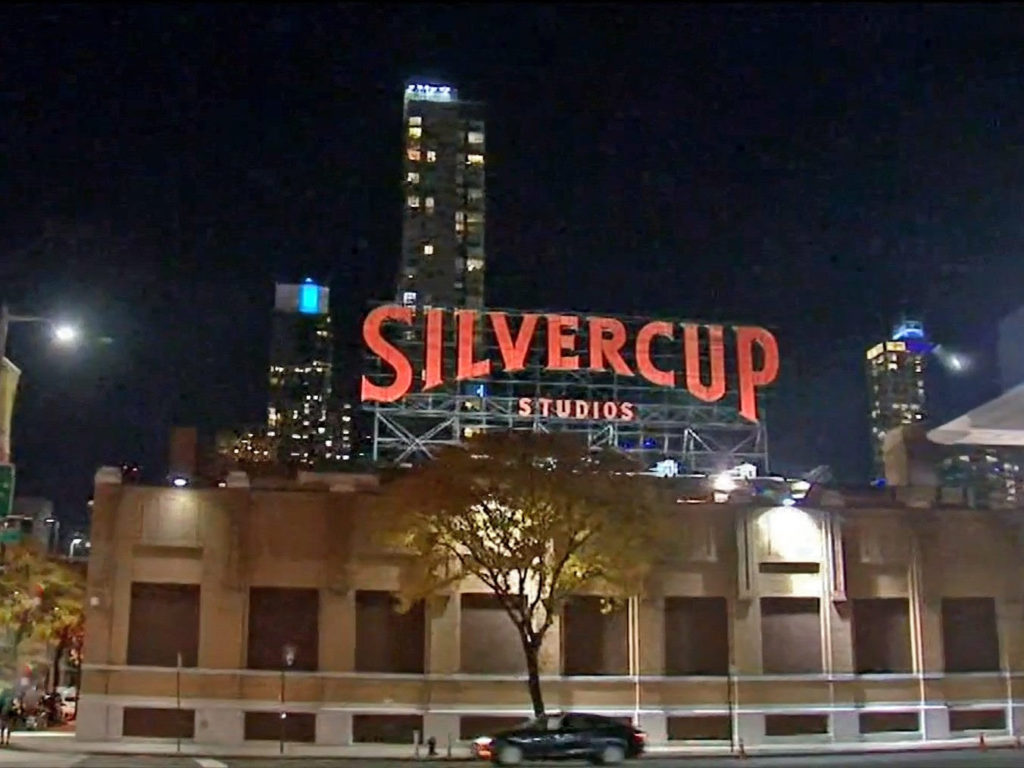Friday, April 22, 2022 – He introduced many future stars


PENNIES FOR PRESERVATION
returns this Saturday, April 23rd.
We will be collecting at the Farmer’s Market
Donations can also be left at 531 #1704 or with door station to the attention of Judith Berdy
All donations support the Roosevelt Island Historical Society.
Thanks for your support of the RIHS
Judith Berdy
President

FRIDAY, APRIL 22, 2022
The 656th Edition
Florenz Edward Ziegfeld Jr.
Stephen Blank
Florenz Edward Ziegfeld Jr. was the most important producer in the history of the Broadway musical, the unmatched Broadway entertainment entrepreneur. Ziegfeld shared P.T. Barnum’s bravura and Texas Guinan’s truth-stretching style, but he sailed higher and influenced more than either of them. His business card read “Impresario Extraordinaire”, and the title was well deserved.

Ziegfeld in 1928, Wikipedia
Ziegfeld’s father was a German immigrant of the same generation as William Steinway, and like him, not a struggling refugee but a well-educated professional, the former mayor of a small German town, who came to the US to launch a new life. He was the founder and director of the Chicago Musical College. The first son, Florenz, was expected to follow in his father’s footsteps, but the color and excitement of the musical theater proved irresistible.
The theater at the turn of the century lacked a figure who could fuse the naughty sexuality of the streets and the saloons and burlesque shows with the savoir-faire of café society. What it lacked was Florenz Ziegfeld. Over his long career, Ziegfeld reshaped the American musical, achieving enormous fame and influence. But he struggled through dry periods as well, worsened by his gambling. And always, women.
The first phase of Ziegfeld’s career was built around a French performer, Anna Held (who in fact was the daughter of a Polish Jewish seamstress and had performed in London’s Yiddish theaters). Her colorful French accent, eighteen-inch waist, hourglass figure and coquettish personality captivated Ziegfeld. His flimflammey blossomed: Held took milk baths to enhance her soft skin (untrue), Ziegfeld loudly sued a diary for providing sour milk (untrue) and announced that women all over the country were draining dairies for their own milk baths (untrue). But the press loved it. Anna created a persona of “gaiety, champagne, naughtiness and high kicks.” And the press loved her.

Portrait of Held c. 1908, by Léopold-Émile Reutlinger, Wikipedia
Over a dozen years, Ziegfeld produced seven Broadway musicals tailored to showcase her charms. Each ran for a few weeks in New York – none a major success – before touring. When Held starred in a vaudeville show that won rave reviews, Ziegfeld realized he had been missing Held’s music hall appeal. Now, shows were better suited to her style. She introduced several hit songs, including “I Just Can’t Make My Eyes Behave” and “It’s Delightful to Be Married.” Ziegfeld backed her with a troupe called “The Anna Held Girls” – the first of his signature chorus lines.
Many popular songs warbled out of Ziegfeld’s productions, most of which are long forgotten. But some are eternal. Among them, “Shine On Harvest Moon”, “By the Light of the Silvery Moon”, “A Bicycle Built for Two”, and “Row, Row, Row Your Boat.” Who knew that “Shine of Harvest Moon” came out of a Ziegfeld show, sung by torcher Ruth Etting (Doris Day portrayed Etting’s tough life in “Love Me or Leave Me”).

https://www.wikiwand.com/en/Ziegfeld_Follies
In 1907, Ziegfeld unveiled his most enduring legacy, the lavish “revues” (modeled on Paris’ Folies Bergère, thus “revue” not “review”). In 1911, the revues were renamed the Ziegfeld Follies. Packed with wildly talented performers (Fanny Brice, Ruth Etting, W. C. Fields, Eddie Cantor, Marilyn Miller and Will Rogers performed regularly at the Follies), the best songs by Irving Berlin, George Gershwin and Jerome Kern, with elaborate costumes and sets, and featuring beautiful “Ziegfeld Girls” chosen personally by Ziegfeld (Flo’s said to have interviewed 15,000 women a year for a quarter of a century of whom 3,000 were selected as Ziegfeld Girls), his spectacular extravaganzas played annually until 1931.

And women. Apparently, a lot of women. Ziegfeld’s very public pursuit of showgirl Lillian Lorraine, a temperamental beauty who’s taste for alcohol and monumental tantrums would plague Ziegfeld as their on-again/off-again love affair spread over the next two decades. One night, Lorraine accused Fanny Brice of trying to steal one of her wealthy boyfriends. The resulting backstage brawl ended with a triumphant Brice dragging a tattered Lorraine by her hair across the stage – to the shocked delight of the audience. Ziegfeld did not side with his mistress. In fact, Lorraine was fired soon afterward for missing a rehearsal (but rehired shortly after).
Ziegfeld continued to produce book shows as well as the Follies. The most famous was Show Boat in 1927 with Jerome Kern’s music that remain a regular of songsters. Ziegfeld had reached the apex of his career. He was the undisputed King of Broadway, and all of show business looked upon him as something of a living legend.

The Original Broadway Production Of Jerome Kern And Oscar Hammerstein Show Boat Poster https://www.amazon.com/Nposter-Original-Broadway-Production-HammersteinS/dp/B07C81YVXW
Ziegfeld, tired of seeing his audiences leave after performances of the Ziegfeld Follies to spend money at other people’s nightclubs, staged a late-night revue in the New Amsterdam Theatre’s underused 680 seat roof-top theater. The stage would roll back revealing a dance floor; chorus girls danced down a glass walkway, right above the customers seated below. Later called the Midnight Frolic, the show was a bit more risqué than the Follies. The girls shimmying down the glass walkway above the audience were reportedly cautioned to wear bloomers, but the rule wasn’t always followed. Audience members were asked to vote for the young lady considered the most beautiful, and the winner during the run of that Frolic series had her salary doubled – which surely encouraged even more extravagant hijinks.

Critics loved it: “The latest edition of Florenz Ziegfeld’s ‘Midnight Frolic,’ which had its first presentation Monday midnight before an audience that embraced all who live and move and have their being in Broadway, out-Ziegfelds all its predecessors. It is like the others only more so. It is a Ziegfeld show of beautiful women, frocks and tableaux designed for the businessman who is too tired to go home after the play… One might search the world and not find anything quite as unique or lavish as this midnight revue.”

Flo never missed an opportunity to seize the moment. At the first pre-Broadway performance of Show Girl, Ruby Keeler was dancing to the Gershwin hit “Liza” when Keeler’s husband, Al Jolson, stood up in the audience and started singing it. The audience, thinking that Jolson was encouraging his wife, roared its approval. Ziegfeld made the most of the situation by convincing Al to repeat the stunt during the show’s first week in New York.
Ziegfeld was often broke and suffered massive losses in the Wall Street crash. He borrowed money from his chum, Diamond Jim Brady, and his third wife, the showgirl and actress Billie Burke (remember Glinda, the good witch in The Wizard of Oz) supported him and his business with her Hollywood career. Ziegfeld cheated consistently, but Burke worked tirelessly for decades after his death to settle his debts.
Thinking about Ziegfeld’s “girls”, first, for quite a few, his shows became a first step to wider fame and, second, they were often very young when they danced on Ziegfeld’s stage. Some went on to the movies. At 19, Marion Davies appeared in the Ziegfeld Follies of 1916. She would meet William Randolph Hearst, who backed several of Ziegfeld’s shows, and have famous careers — in Hollywood and as Hearst’s mistress. Louise Brooks was there at 19 and went on to an important film career. Barbara Stanwyck, the Frank Capra heroine and film noir femme fatale, was 16 in the Ziegfeld Follies of 1922. “I just wanted to survive and eat and have a nice coat,” She said. Paulette Goddard, another film star, appeared in a Ziegfeld show at 16. Other Ziegfeld alums include Olive Thomas, Mae Murray, Billie Dove, Marilyn Miller, Fanny Brice, Ruth Etting, and Marilyn Miller. Others – Norma Shearer, Mae West, Joan Crawford and Janet Gaynor – almost made it into the Follies but didn’t make the cut.
Some were just drop dead gorgeous.

Ziegfeld girl, Muriel Finlay, photo by Alfred Cheney Johnson, ca. 1928 https://www.wikiwand.com/en/Ziegfeld_Follies
Not everyone was famous, but some managed a good life – or a good time. The Times ran an article about the Ziegfeld Club – made up of former Ziegfeld girls. Several lines caught my eye:
“Sure I had a sugar daddy,” Vi Corey Phillips said. “Fie invested $5,000 and I got a part in one of the shows. He even gave me a diamond bracelet once, and I disliked diamonds intensely. What really wanted was an emerald, but I never got one. He had a wife and six kids at home. But in those days, you had … friends.”
“And I remember champagne parties where there were $100 bills under the plates,” recalls Madeleine Janis Courter, who had the most prestigious Follies job —that of showgirl—in the 1927 Follies, and who later achieved the Follies girl’s dream—landing a millionaire husband, Joseph A. Courter.
Was there a “Ziegfeld touch”? “What was his touch? . . . First, Ziegfeld knew the subtle line between desire and lust, between good taste and vulgarity, and never crossed it… Second, the exhibitionism which was part of his private life was not contrived. It was an integral part of him, part of the personality mechanism that made him what he was: a gambler who had an almost childish irresponsibility toward the value of money and an equally childish conviction that he could always get some more when he wanted it. Most of the time he was astonishingly right. And finally, he had a sense of showmanship and of female beauty that was the despair of his competitors.” (Marjorie Farnsworth, The Ziegfeld Follies, 1961)
Great Fun, thanks for coming along
Stephen Blank
RIHS
April 15, 2022
FRIDAY PHOTO OF THE DAY
SEND ANSWER TO ROOSEVELTISLANDHISTORY@GMAIL.COM


THURSDAY PHOTO OF THE DAY
The original Silvercup sign is being lit by a new system the last week. The sign was not neon, but lit by spotlights until recently.
We are waiting to see the final version, and suggest those of us whose window face east will be seeing the glow of the new lighting very well!
Ed Litcher got it right!
Text by Judith Berdy
Thanks to Bobbie Slonevsky for her dedication to Blackwell’s Almanac and the RIHS
Thanks to Deborah Dorff for maintaining our website
Edited by Melanie Colter and Deborah Dorff
All image are copyrighted (c) Roosevelt Island
Historical Society unless otherwise indicated:
Sources
STEPHEN BLANK
Cynthia Brideson and Sara Brideson, Ziegfeld and His Follies (University of Kentucky Press, 2015)
James Traub, The Devil’s Playground: A Century of Pleasure and Profit in Times Square (New York: Random House, 2004)
https://blog.mcny.org/2014/07/01/the-ziegfeld-midnight-frolic/
https://theatrenerds.com/broadways-beauties-the-famous-women-of-the-ziegfeld-follies/
https://www.musicals101.com/ziegbio.htm
https://www.pbs.org/wnet/broadway/stars/florenz-ziegfeld/
http://www.classicmoviehub.com/blog/five-actresses-you-didnt-know-were-ziegfeld-girls/
Ziegfeld Girls Recalling the Glitter of an Era By Judy Klemesrud, NYT April 25, 1975
Former Ziegfeld Follies Girl Recalls the Glory Days By Douglas Martin, NYT Oct. 18, 1996
RIHS (C) FUNDING PROVIDED BY ROOSEVELT ISLAND OPERATING CORPORATION PUBLIC PURPOSE GRANTS CITY COUNCIL REPRESENTATIVE BEN KALLOS DISCRETIONARY FUNDING THRU DYCD


Copyright © 2022 Roosevelt Island Historical Society, All rights reserved.Our mailing address is:
rooseveltislandhistory@gmail.com



Leave a comment